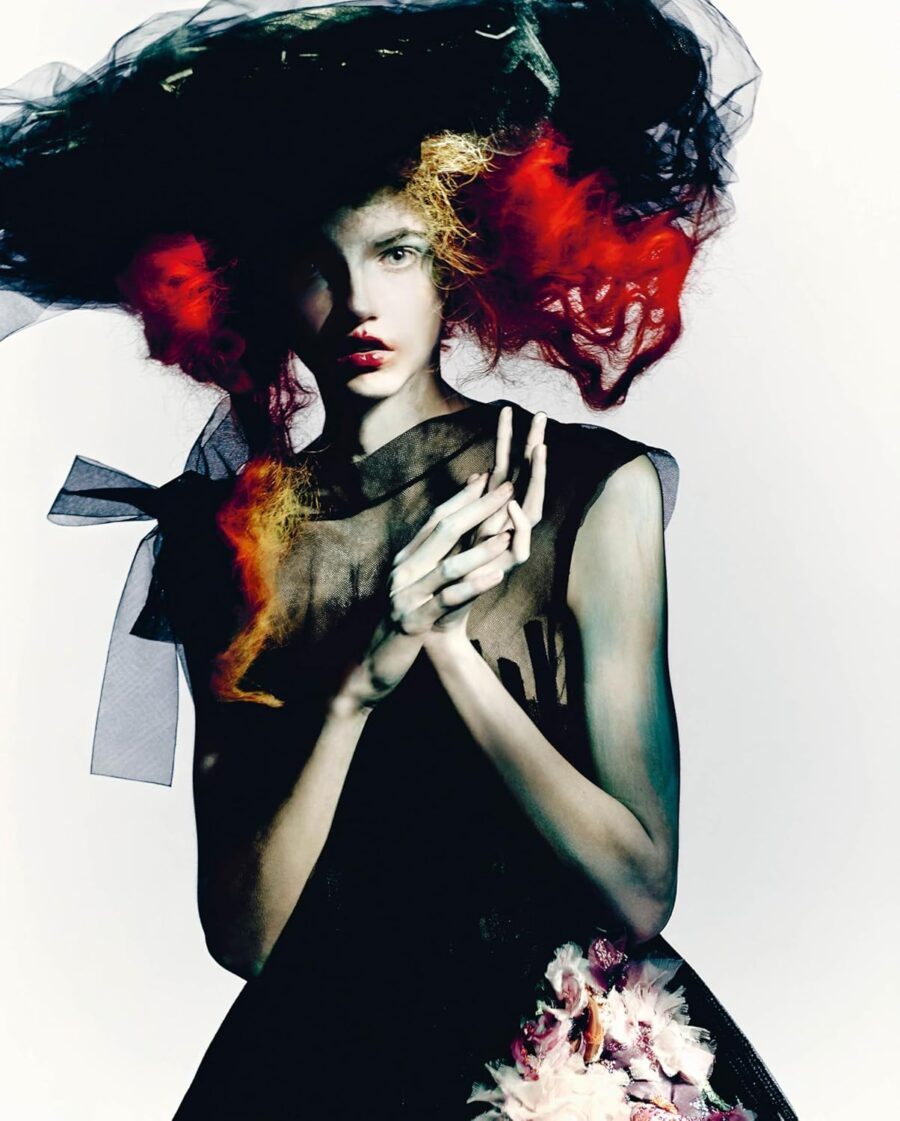Few photographers have shaped the visual language of contemporary fashion like Paolo Roversi. With a career spanning more than four decades, Roversi has built a poetic, enigmatic aesthetic that blurs the line between classical portraiture and avant-garde editorial. In Paolo Roversi, a richly illustrated monograph authored by curator and photography historian Sylvie Lécallier, readers are invited to journey through the evolution of Roversi’s career, from his early days in Italy to his seminal collaborations with top designers and fashion houses. Slated for release in August 2025, the volume serves not only as a visual retrospective but also as a meditation on Roversi’s influence and artistry.
A Master of Intimacy and Mystery
Roversi’s photographs are instantly recognizable: soft-focus portraits bathed in diffused light, often shot on large-format Polaroid film. His images possess a timeless, dreamlike quality, ethereal yet deeply intimate. Lécallier’s book foregrounds this signature style while tracing its roots in Roversi’s early experiments with photography in his hometown of Ravenna and his subsequent move to Paris in the 1970s. In Paris, Roversi found a creative home where the worlds of haute couture and experimental photography intersected, allowing him to cultivate a distinctive visual language.
What sets Roversi apart is his rare ability to evoke emotional depth through minimalism. Unlike the high-saturation, digitally polished fashion imagery that dominates today’s landscape, Roversi’s work feels tactile, painterly, and serene. His use of long exposure times and antique photographic techniques connects his work to the traditions of 19th-century portraiture, while his subjects, supermodels, actors, and musicians, remain icons of contemporary culture.
Key Collaborations and Editorial Legacy
The book dives deep into Roversi’s enduring collaborations with leading fashion designers such as Romeo Gigli, Yohji Yamamoto, Rei Kawakubo, and John Galliano. These creative partnerships were never purely transactional; instead, they became enduring dialogues in which Roversi translated fashion into visual poetry. Lécallier carefully documents how Roversi’s sensibilities aligned with these designers’ own philosophies, whether Galliano’s romantic theatricality or Yamamoto’s sculptural minimalism, creating imagery that transcended the page.
Roversi’s editorial work for publications like Vogue Italia, i-D, and Another Magazine is also given ample attention. Noteworthy series, such as his many collaborations with stylist Edward Enninful and editor Franca Sozzani, demonstrate how Roversi was able to infuse commercial assignments with emotional nuance and conceptual rigor. Through these editorials, he expanded the narrative possibilities of fashion photography, often reducing settings to bare studio backdrops that amplified the subject’s inner life.
The Role of the Muse
Lécallier also explores Roversi’s relationship with his muses, models who became recurring figures in his body of work. Names like Natalia Vodianova, Guinevere Van Seenus, and Kirsten Owen appear throughout the book, not just as models but as collaborators in the creative process. Roversi’s approach to portraiture is deeply humanistic; he seeks not merely to capture physical beauty, but to reveal something ineffable in each subject. His photographs are often the result of extended sittings, long conversations, and patient observation, a process far removed from the high-speed pace of modern fashion shoots.
A Singular Vision, Continually Evolving
Though he is often associated with a timeless, even nostalgic aesthetic, Roversi is far from static. The book shows how his practice has adapted over the years, incorporating digital processes without abandoning the integrity of his analog methods. Recent campaigns for Dior and his hauntingly beautiful Pirelli Calendar for 2020, featuring reinterpretations of Shakespeare’s Juliet, demonstrate that Roversi’s vision continues to resonate with new generations.
Lécallier positions Roversi not only as a master of fashion photography but as an artist whose work reflects a deeper philosophical concern with time, identity, and perception. In an era saturated with fleeting images, Roversi’s portraits demand contemplation. They invite the viewer to slow down, to see rather than look.
An Essential Monograph for Photographers and Fashion Aficionados
Published in anticipation of new exhibitions and retrospectives, Paolo Roversi is more than a coffee-table book; it is a critical tribute to an artist who has redefined how we see fashion and beauty. Lécallier’s contextual essays, paired with dozens of striking images, many previously unpublished, make this an essential volume for photographers, designers, and anyone interested in the intersection of art and style.
With its elegant layout and thoughtful narrative structure, the book stands as a fitting homage to a photographer whose work is as fragile and profound as the medium he so reverently explores. As fashion continues to evolve, Roversi’s images remain a reminder that the most enduring beauty is often found in simplicity, silence, and light.









